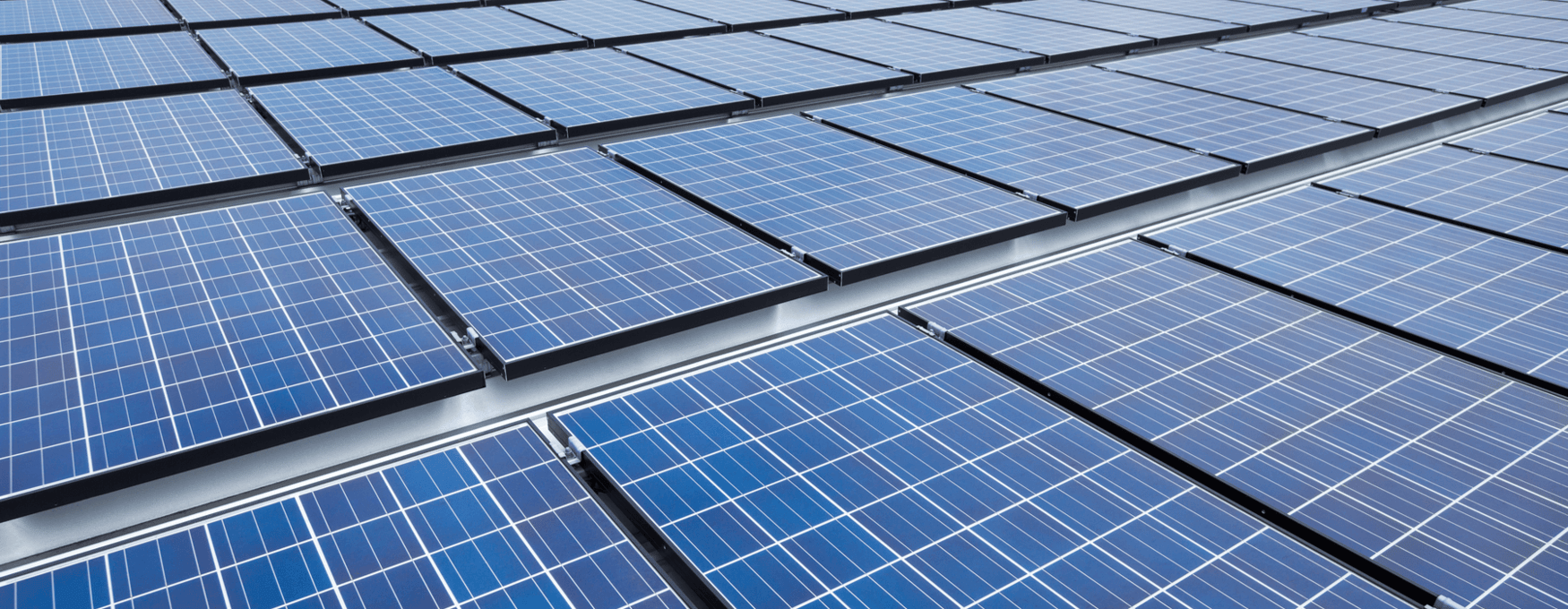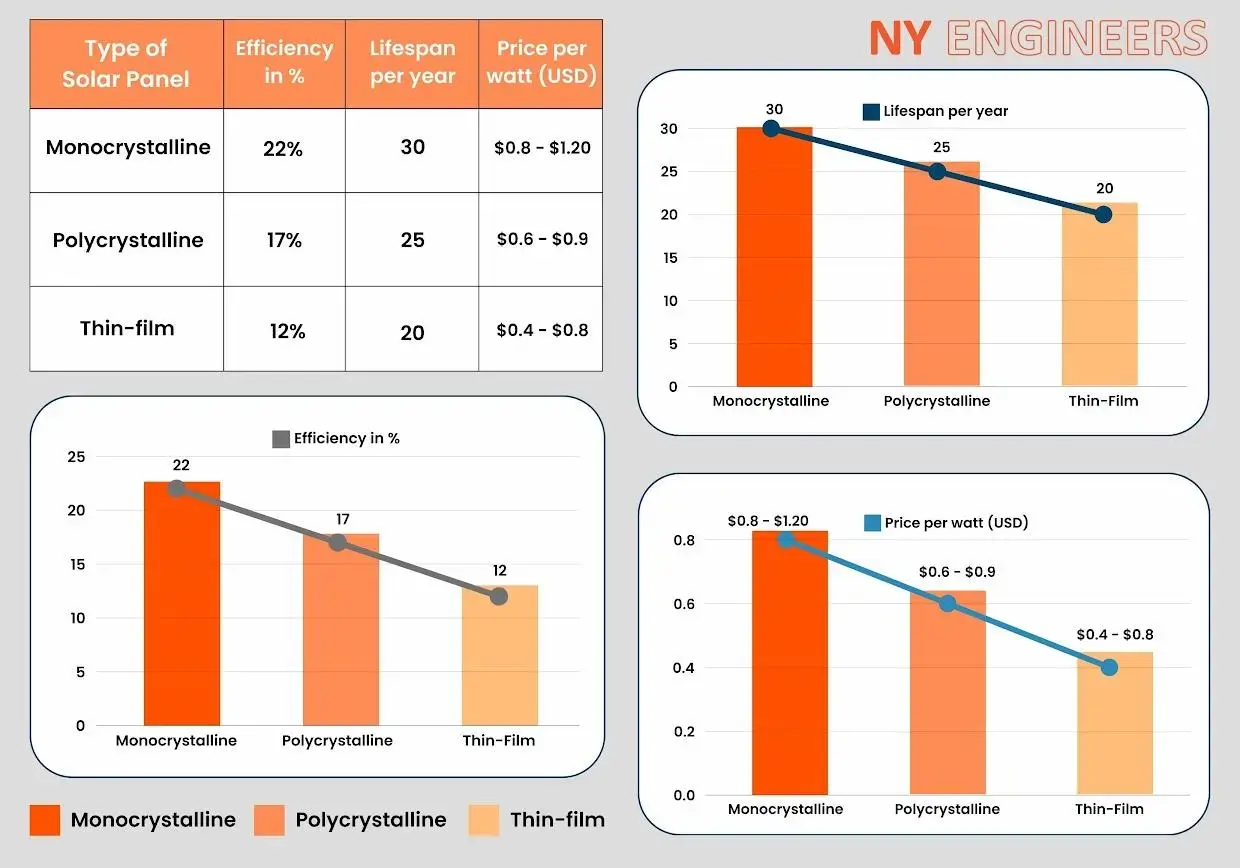How Efficient Are Solar Panels in 2025?

Introduction
Solar panel efficiency has always been a critical factor in the adoption of solar energy, especially as businesses and engineers look to optimize power generation for projects. The percentage of sunlight that a solar panel can convert into usable electricity—the measure of its efficiency—directly influences the energy output, reducing costs and environmental impact. With rapid advancements in solar technologies, 2025 marks a pivotal year for improved performance and innovation in the solar energy sector.
This blog explores what solar panel efficiency means, the most efficient solar panels currently available, upcoming innovations, and how proper engineering can elevate the overall system performance.
What Does Solar Panel Efficiency Mean?
Simply put, solar panel efficiency reflects the ability of a solar panel to convert sunlight into electricity. The higher the efficiency, the more energy a panel can generate for the same amount of sunlight. Several factors affect this efficiency, including:
- Panel Type (e.g., monocrystalline, polycrystalline, thin-film)
- Production Quality (materials used and manufacturing precision)
- Environmental Conditions (temperature, shading, and angle of installation)
For contractors, developers, and engineers, understanding the core efficiency of solar panels is key when designing systems to maximize energy yield.
Save on electricity bills and cut building emissions with solar power.
The Most Efficient Solar Panels by Type
Different types of solar panels come with varying efficiency levels based on their material composition and construction. Here’s a breakdown of the most efficient options currently available.
1. Monocrystalline Solar Panels (Most Efficient)
- Efficiency: 20%–25%
- Examples: SunPower Maxeon 6, LG NeON R
Monocrystalline panels are made from a single silicon crystal, making electron flow more efficient. They offer the highest conversion rates, making them ideal for projects with limited roof or land space. While their cost is higher, their durability and energy output justify the investment.
2. Polycrystalline Solar Panels
- Efficiency: 15%–18%
- Examples: Canadian Solar, Trina Solar
Polycrystalline panels are composed of multiple silicon fragments, resulting in slightly lower efficiency than monocrystalline panels. They are, however, more budget-friendly and are commonly used in industrial-scale projects.
3. Thin-Film Solar Panels
- Efficiency: 10%–12% (some advanced models reach 20%)
- Examples: First Solar Series 6 (CdTe), Sharp (Amorphous Silicon)
Thin-film panels are lightweight and flexible, making them suitable for unconventional installations, such as building-integrated photovoltaics (BIPVs). While their efficiency lags behind crystalline panels, their cost-effectiveness and versatility offer significant value in certain use cases.

How High-Efficiency Solar Panels Save Space
As the efficiency of photovoltaic cells continues to increase, solar panels will be capable of generating more watts per square foot.
- A 400W solar panel that measures 80” x 40” is producing 18W per sf.
- With an efficiency increase of 33%, it would be possible to generate 24W per sf.
Generally, having space for solar panels is not an issue in buildings like shopping malls and distribution centers. However, multi-story buildings have a large floor area relative to their roof area - and plenty of the available space is already used by HVAC equipment. In these cases, high-efficiency solar panels will maximize the kWh output per square foot covered.
R&D has also reduced the cost of solar panels. You could expect to pay more than $10,000 per kW of capacity 20 years ago, but now home solar systems cost less than $3,000 per kW in many parts of the US. Even lower prices are possible in the utility sector, where solar arrays are being installed for less than $1,000 per kW.
Innovative Developments in Solar Panel Efficiency
The future of solar panel efficiency lies in groundbreaking technology designed to overcome existing limitations. Some of the most exciting advancements include:
1. Perovskite Solar Cells
Perovskite-based panels could revolutionize the industry with efficiency rates surpassing 30%. They are cost-effective to manufacture and integrate well with traditional silicon-based panels in tandem systems.
2. Tandem Solar Cells
By combining perovskite and silicon layers, tandem cells achieve higher energy conversion (35%+ efficiency) by capturing a broader spectrum of sunlight.
3. Quantum Dot & Multi-Junction Cells
These next-generation panels are predicted to achieve theoretical efficiencies of 40% or more. While still in research phases, they represent the future of ultra-high efficiency solar technology.
4. Bifacial & Transparent Solar Panels
Bifacial panels produce electricity from both sides, capturing reflected light, while transparent panels allow rooftops or windows to generate energy without sacrificing aesthetics.
5. AI-Optimized Solar Systems
Artificial intelligence is being leveraged for real-time energy management, improving both system optimization and storage efficiency.
How NY Engineers Enhances Solar Panel Efficiency
The effectiveness of even the most efficient solar panels relies on expert system design and implementation. NY Engineers specializes in engineering solutions that optimize energy yield for commercial and residential solar installations. Here’s how:
- Optimized Solar System Design
By determining the best panel placement, tilt, and orientation, NY Engineers ensure maximum exposure to sunlight, boosting system performance. - Advanced Energy Modeling & Simulations
Using cutting-edge software, they provide in-depth predictions for energy generation across different conditions, allowing for informed decision-making. - High-Efficiency Component Selection
Their team recommends top-tier solar panels, inverters, and batteries tailored to each project’s needs, ensuring long-term performance and durability. - Smart Grid Integration
NY Engineers incorporate AI and smart solar monitoring systems to enhance real-time energy management and overall efficiency. - Compliance & Sustainability Consulting
By adhering to industry standards like NFPA, NEC, and LEED, they ensure systems meet both regulatory and environmental goals.
Explore NY Engineers’ solar engineering projects here. From feasibility studies to full-scale designs, they deliver tailored solutions for solar developers, architects, and energy consultants.
Why Efficiency Matters in Solar Design
Improving solar panel efficiency is crucial for maximizing returns on investment while minimizing carbon footprints. With advancements in technology and professional support from firms like NY Engineers, businesses and professionals can harness solar power to its full potential.
Are you ready to transform your solar projects? Contact NY Engineers today to enhance the efficiency and sustainability of your energy systems.

Michael Tobias
Michael Tobias, the Founding Principal of NY Engineers, currently leads a team of 50+ MEP/FP engineers and has led over 1,000 projects in the US
Join 15,000+ Fellow Architects and Contractors
Get expert engineering tips straight to your inbox. Subscribe to the NY Engineers Blog below.



